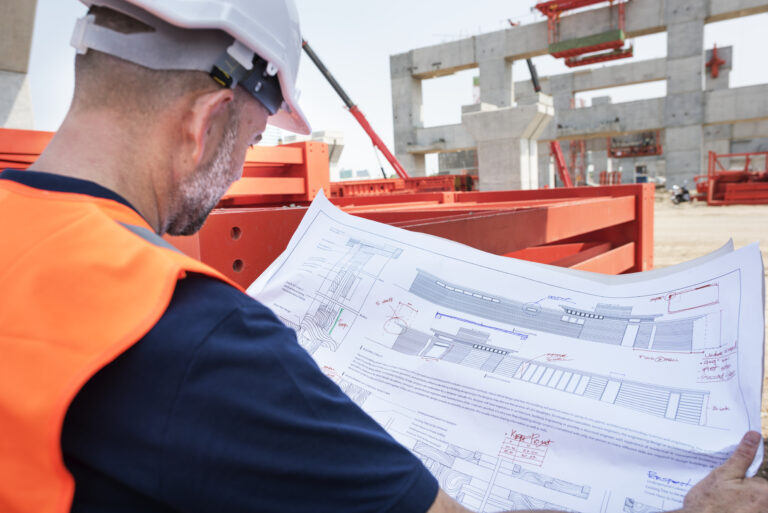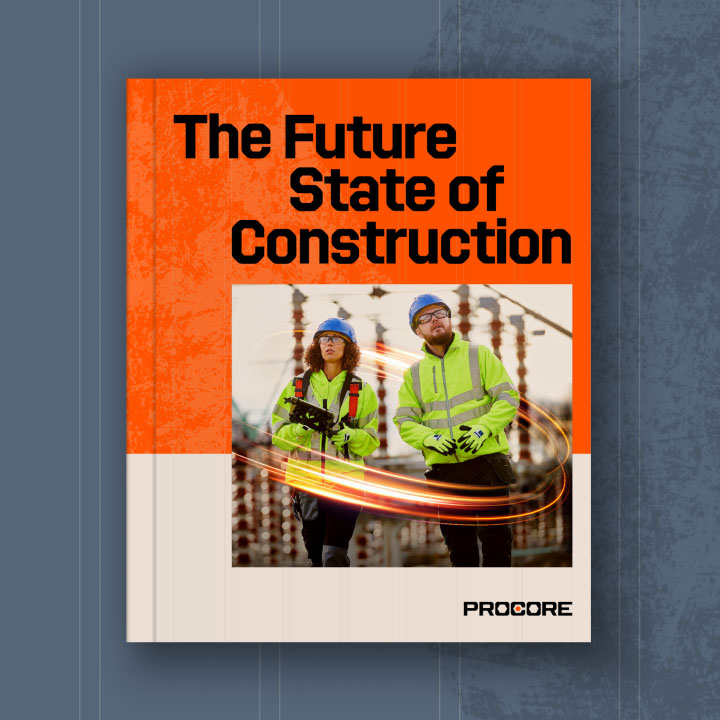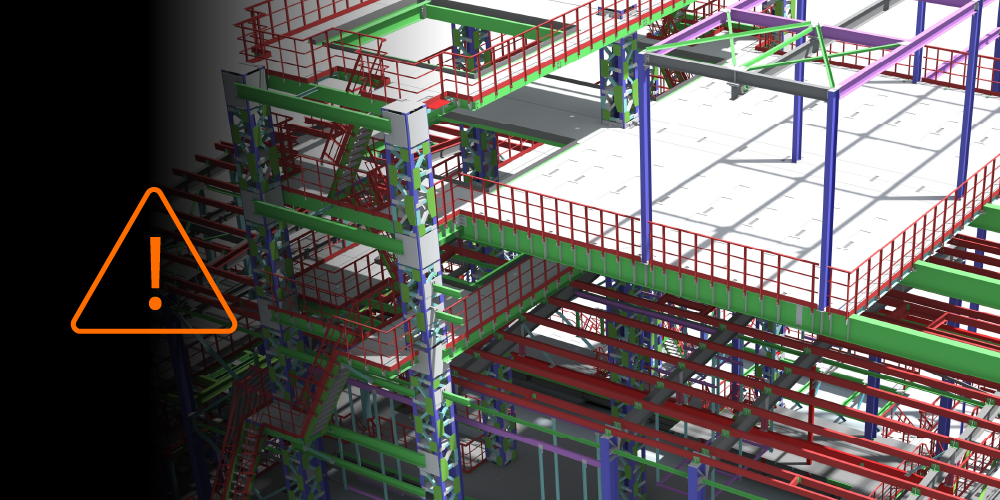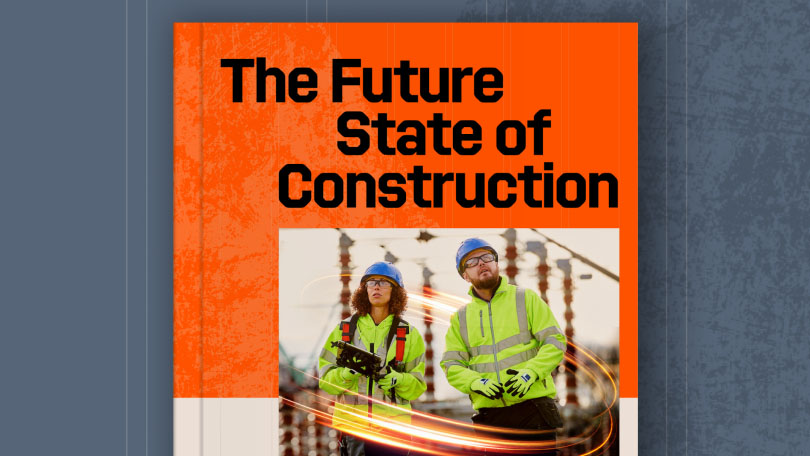Related Articles
— 7 min read
Control the Chaos: Standardising Construction Project Document Workflows

Last Updated Sep 10, 2025

Josh Krissansen
47 articles
Josh Krissansen is a freelance writer with two years of experience contributing to Procore's educational library. He specialises in transforming complex construction concepts into clear, actionable insights for professionals in the industry.
Last Updated Sep 10, 2025

Document control plays a central role in managing risk, meeting deadlines, and delivering projects to spec. As builds become more complex and teams become increasingly dispersed, the volume and velocity of information can strain traditional systems.
This article outlines the key elements of effective document control, the challenges commercial builders face, and how mature systems can support better collaboration, accountability, and decision-making across every stage of project delivery.
Table of contents
What is Construction Document Control?
Construction document control is the structured management of all project-related documentation. It involves the creation, distribution, tracking, and archiving of materials across the project lifecycle, including:
- Inspection records
- Contracts
A disciplined document control process ensures teams work from accurate, current information. This clarity supports faster decision-making, reduces rework risk, and keeps projects aligned with regulatory requirements under the National Construction Code (NCC), Safe Work Australia guidelines, and contractual obligations.
A centralised, accessible record of approvals and changes helps reinforce compliance, build stakeholder confidence, and promote accountability throughout the project lifecycle
Key Aspects of Document Control
Creation, Review, and Approval
Templates standardise formatting across teams, while rules around document precedence resolve conflicts that arise on-site. Together, these practices support a controlled, transparent flow of information from initial draft through to final release.
Version Control
For documents like RFIs, submittals, and drawings, dedicated software is often used to automate version tracking. This reduces reliance on manual processes and helps teams maintain a reliable audit trail.
Storage and Retrieval
Systems typically follow a standardised template, with folders arranged by project phase and document type. Consistent naming conventions improve searchability and avoid duplication.
When these systems are clearly defined and centralised across the team, locating or storing documents is quick and reliable. This minimises search time for files and supports better coordination between disciplines.Distribution and Communication
Access to project documentation is typically governed by predefined roles and responsibilities. Permissions are set to control who can view, edit, or share specific files, helping prevent errors and miscommunication.
Communication is centralised through integrated tools that replace email threads and scattered updates, creating a clear record of document activity. With greater visibility, project leaders can ensure critical information reaches the right people without delay.Archiving
All documentation is archived in a secure, searchable format, forming a complete record of project activity. These archives support compliance with Australian regulations and provide protection in the event of audits, claims, or contractual disputes.
Regular reviews ensure archiving procedures align with current legal requirements. A reliable archiving system also supports future work by providing reference points for similar projects or ongoing asset management.
Challenges of Document Management
Document control in construction faces pressure from multiple angles, leading to tight timelines, dispersed teams, shifting project scopes, and a constant stream of information.
Without the right systems and structure, these conditions create friction that affects quality, compliance, and profitability.
Version Confusion and Outdated Information
Inconsistent version control can leave teams working from the wrong documents. When multiple revisions are shared informally (through email, messaging apps, or printed copies), it becomes difficult to track which version is current.
This confusion leads to costly rework, program delays, compliance failures, and contractual disputes. The risk is amplified on larger projects where many stakeholders are referencing the same material across different locations.
Limited Accessibility and Poor Distribution
Documents stored in disconnected systems or spread across paper and digital formats create access challenges. Site teams often struggle to retrieve the latest files, especially when working in remote or fast-moving environments.
Without centralisation, teams resort to ad hoc methods:
- Forwarding files by email
- Sharing screenshots via messaging apps
- Printing and circulating physical copies
These workarounds lack visibility and control, making it harder to verify who has received and reviewed the correct information.
Time-Consuming and Admin-Heavy Workflows
Manual document management creates significant overhead. Reviewing, updating, and chasing approvals consumes time that could otherwise be spent on-site.
Follow-ups are often missed when approvals are handled through informal channels. On commercial builds with tight timelines, this added friction can create cascading delays across trades and subcontractors.
Increased Risk of Error and Inconsistency
Without structured systems, incomplete or conflicting documents are harder to detect. Teams may unknowingly act on inaccurate information, especially when quality checks rely on manual oversight.
Inconsistent document practices (such as variable naming, untracked edits, or unclear ownership) make it difficult to maintain accuracy. These gaps raise the risk of non-compliance, missed inspections, or costly site issues that impact safety and program performance.
Lack of Standardisation and Structure
Teams following individual approaches to naming, filing, or reviewing documents create inevitable confusion. The absence of a shared structure increases the likelihood of duplicated work, miscommunication, or delays during coordination.
This inconsistency also affects project closeout. Without standardised records, handovers and audits become more time-intensive, exposing the business to added operational and legal risk.
See what’s coming in construction over the next decade.
Download the Future State of Construction Report for insights, trends, and innovations shaping the industry over the next 8–10 years.

How to Optimise Your Construction Document Control
1. Establish Project-Wide Standards
Setting expectations early reduces confusion later. During mobilisation, document control protocols should be defined in the execution plan. Responsibilities for drafting, reviewing, approving, and distributing documents need formalisation across the full delivery team.
Key practices include:
- Adding an order of precedence clause in contracts to guide resolution when documentation conflicts arise
- Developing a project-specific control plan that outlines workflows, terminology, and metadata requirements
- Briefing all consultants and subcontractors on documentation expectations before they’re engaged
With standards set upfront, teams spend less time chasing clarifications and more time progressing the build.
2. Implement Structured, Scalable Organisation
Disorganised storage slows down delivery and increases the risk of error. A structured folder hierarchy, mapped to project phases and deliverables, creates consistency across teams and improves file retrieval at every stage.
This structure should:
- Categorise documents by function, such as design, approvals, safety, and variations
- Include pre-built folder trees in templates, deployed across all new projects
- Apply consistent naming logic, from project code through to revision number
- Be audited regularly to identify misplacements or inconsistencies
For large-scale programs, a shared structure also supports faster onboarding of new team members and consultants.
3. Standardise Naming Conventions and Version Control
File naming and version tracking are common sources of project disruption. When teams reference wrong drawings or submit outdated specifications, the downstream effects may be significant.
To prevent this:
- File names should include document type, discipline, version, and status
- Status indicators (such as IFR, IFC, or As Built) must be applied consistently
- Older versions should be locked to prevent accidental use
- A version log or metadata trail should be maintained for audit purposes
- Document control platforms should handle version tracking automatically
Standardisation not only ensures clarity. It also provides legal defensibility if disputes arise over changes or approvals.
4. Control Access with Precision
Access control protects data integrity and maintains accountability. Permissions should reflect project roles rather than convenience.
Assign access based on:
- Package ownership
- Document sensitivity
- Approval responsibilities
Track views and downloads for critical records such as certifications and instructions. Maintain segmented access between internal teams and external collaborators, while keeping all communication, including comments, markups, and transmittals, within the same controlled system.
5. Enable Real-Time, Digital Access
Project teams need access to accurate documentation wherever they’re working—from head office to job site to a client meeting on the road. Cloud-based systems offer the flexibility required to operate at speed.
Key features to prioritise include:
- Real-time syncing across desktop and mobile devices
- Offline access for remote or low-connectivity environments
- Centralised updates to eliminate reliance on outdated PDFs or printed copies
Field teams should never have to guess if a drawing is current. Cloud access makes sure they don’t.
6. Automate Workflows and Escalation
Remove manual friction where possible. Automated workflows ensure document reviews, sign-offs, and escalations happen on time and with clear accountability.
This can include:
- Rule-based approvals for ITPs, RFIs, design changes, and NCRs
- Automated alerts for overdue reviews or pending sign-offs
- Task assignments triggered by workflow stage or document type
- Dashboards that surface current document statuses and review queues
Beyond saving time, automation shows what's delaying progress and who needs to act.
7. Build Feedback Loops and Audit Mechanisms
A document control process should evolve throughout the project. High-performing teams treat it as a live system that improves with input and real-world pressure testing.
To make that happen:
- Schedule reviews at defined project stages (e.g. design freeze, handover)
- Capture feedback from key functions, not just document controllers
- Simulate traceability tests to check how easily a document trail can be followed
- Track lessons learned across projects and update processes accordingly
The goal is not just control. It’s resilience, reliability, and continual improvement.
Without strong construction document control, even well-managed projects can unravel.
Clear standards, structured workflows, and appropriate technology form the foundation of construction document control. Commercial builders who prioritise these elements experience reduced risk, greater efficiency, and more predictable project outcomes.
Categories:
Written by

Josh Krissansen
47 articles
Josh Krissansen is a freelance writer with two years of experience contributing to Procore's educational library. He specialises in transforming complex construction concepts into clear, actionable insights for professionals in the industry.
View profileExplore more helpful resources

Managing Direct Costs in Construction: How Visibility Drives Profitability
Direct costs define the financial reality of every construction project. They cover the labour, materials, and equipment that drive delivery and determine profitability. But even the best-planned budgets can shift...

BIM Clash Detection: Reducing Rework, Delays, and Risk in Construction
Design clashes can be a significant hidden cost in construction, as each conflict between systems risks expensive rework, project delays, and reduced margins. BIM clash detection empowers teams to identify...

Next-Gen Job-Costing: Ready to Move? 5 Things to Consider Before You Get Started
In this three-part series, Quantity Surveyor turned Financial Solutions Specialist Clint Burgess uncovers the real-world gains for people, processes, and profits when businesses move from legacy to next-generation Enterprise Resource...

From Workarounds to Workflow: Solving Construction’s Legacy Job-Costing System Challenges with Next-Gen Tools
In this three-part series, Quantity Surveyor turned Financial Solutions Specialist Clint Burgess uncovers the real-world gains for people, processes, and profits when businesses move from legacy to next-generation Enterprise Resource...
